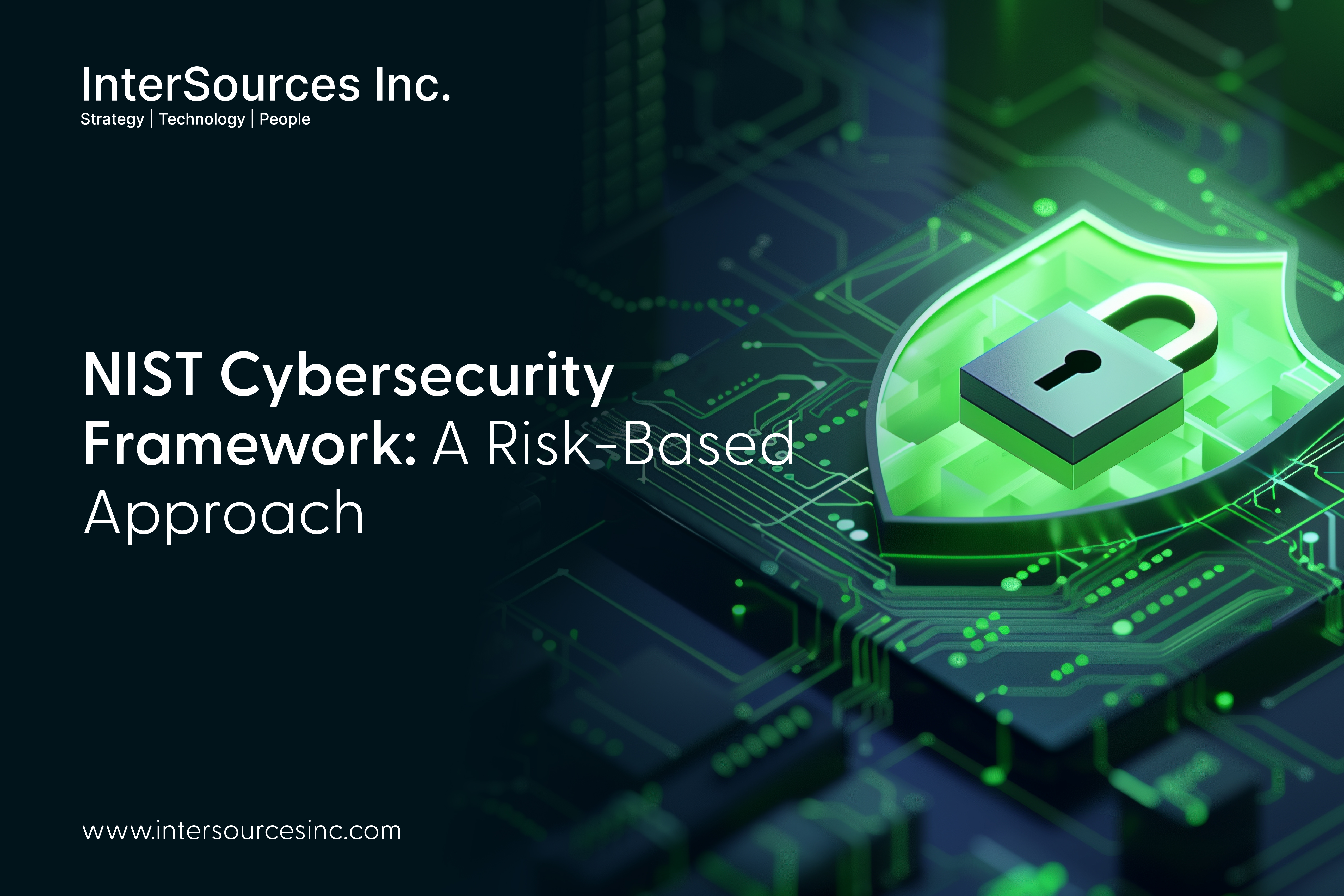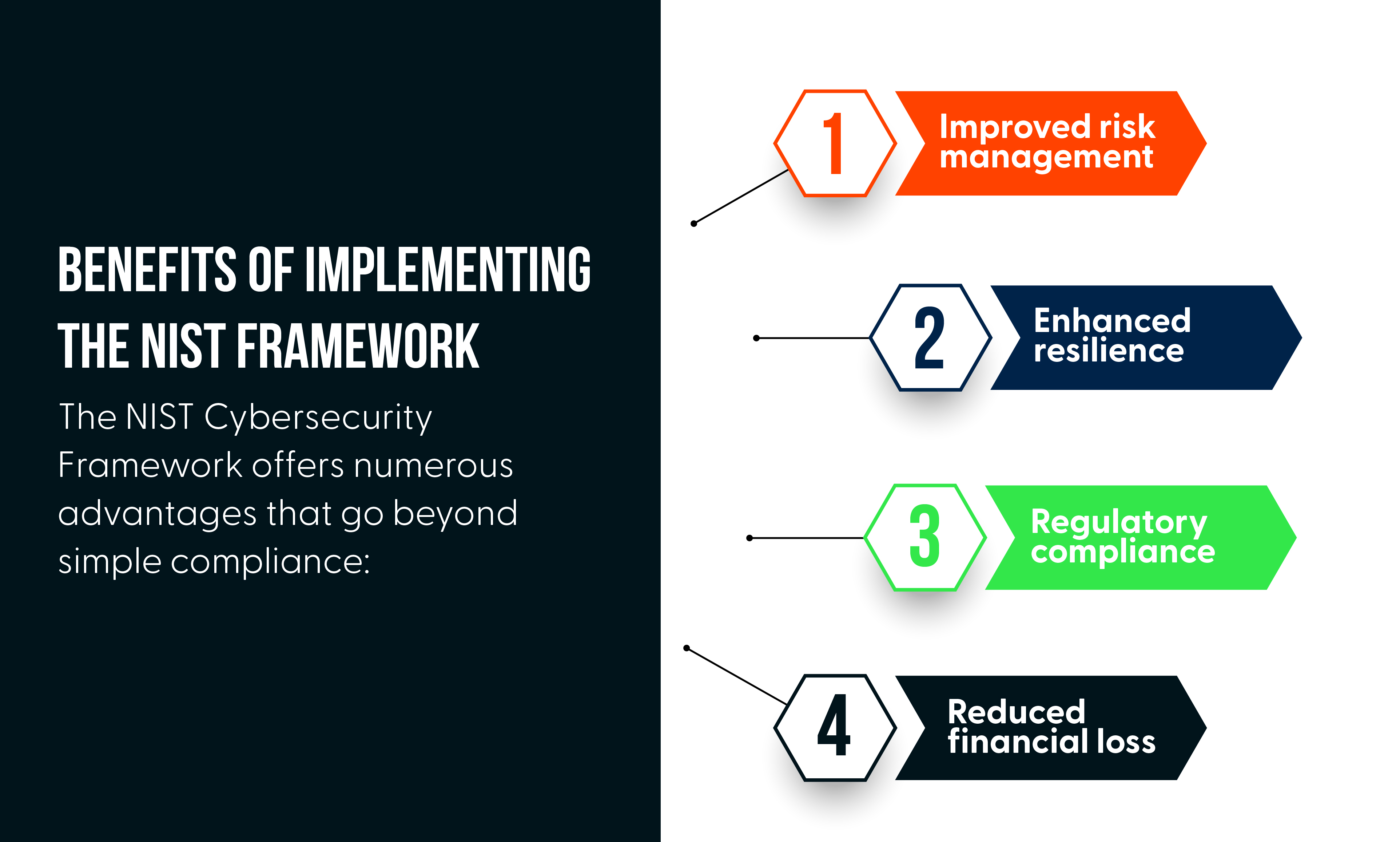← All Blogs

NIST Cybersecurity Framework: A Risk-Based Approach
Security ratings are a valuable indicator that you're staying on top of your organization's cyber health. However, it's equally important to demonstrate compliance with industry standards and regulatory best practices in IT security, while making well-informed, long-term decisions. A cybersecurity framework can provide the structure needed to achieve this.
The National Institute of Standards and Technology (NIST), a U.S. government agency renowned for its role in advancing technology and standards, has developed a robust cybersecurity framework to address these growing challenges.
The NIST Cybersecurity Framework (CSF) offers a risk-based approach that helps organizations identify, protect, detect, respond to, and recover from cyber incidents. Its flexible, scalable structure makes it suitable for companies of any size, from startups to global enterprises.
For C-suite executives, the NIST CSF is essential in managing enterprise security, aligning cybersecurity with business goals, and mitigating risks that could lead to operational disruptions or reputational damage. By adopting this framework, businesses can enhance their cybersecurity posture, improve resilience, and better navigate today's complex cyber threat.
What is the NIST Cybersecurity Framework?
The NIST Cybersecurity Framework was developed in response to the rising tide of cyber threats and the need for a standardized, adaptable approach to cybersecurity. At its core, it offers five key functions—Identify, Protect, Detect, Respond, and Recover—designed to guide organizations through the lifecycle of managing cyber risks.
This risk-based framework provides a common language for communicating cybersecurity risks, which is vital for cross-departmental coordination and stakeholder engagement. What makes it powerful is its flexibility—whether you’re a small startup or a multinational corporation, the framework can be customized to suit your specific business and security needs.
Why a Risk-Based Approach is Essential
In cybersecurity, a risk-based approach is crucial for prioritizing efforts where they matter most. Rather than following a one-size-fits-all compliance checklist, the NIST framework encourages organizations to tailor their cybersecurity strategies based on their unique risk profiles.
Focuses on mitigating high-impact risks.
Prioritizes resources on critical vulnerabilities.
Aligns with long-term business goals, not just short-term compliance.
Example: A healthcare provider that adopted the NIST framework could mitigate high-risk vulnerabilities in its patient data system, resulting in a 30% reduction in security incidents over a year.
This approach allows organizations to allocate resources effectively, reducing the likelihood of costly breaches and ensuring better resilience against sophisticated attacks.
Breakdown of the NIST Cybersecurity Framework Core Functions
The NIST Cybersecurity Framework operates through five core functions:
Identify: Know what to protect. Conduct risk assessments to identify critical assets, potential threats, and vulnerabilities. This foundational step helps in understanding your organization’s risk exposure.
Activities include asset management, governance, and business environment evaluation.
Protect: Safeguard assets. Implement protection measures like access controls, data security, and security awareness training to shield your business from threats.
Protecting key systems reduces the likelihood of incidents while maintaining operational integrity.
Detect: Monitor for threats. Use real-time monitoring and logging to detect anomalies that could signal cyberattacks.
Early detection is vital in minimizing the damage of a breach, enabling faster responses.
Respond: Take action. Incident response planning ensures that your organization can act swiftly to contain and mitigate threats.
A proactive response reduces downtime and helps avoid further damage.
Recover: Bounce back. Recovery planning focuses on business continuity, allowing organizations to return to normal operations quickly post-incident.
Having a robust recovery plan strengthens organizational resilience and ensures post-incident learnings are integrated into future security strategies.
Benefits of Implementing the NIST Framework
The NIST Cybersecurity Framework offers numerous advantages that go beyond simple compliance:

Improved risk management: Tailor your cybersecurity efforts to address specific threats.
Enhanced resilience: Respond faster to incidents and minimize downtime.
Regulatory compliance: Stay aligned with industry regulations like GDPR, HIPAA, or CCPA while focusing on real threats.
Reduced financial loss: A risk-based approach lowers the chances of costly breaches, protecting your bottom line and reputation.
Read More
ISO 27001:2022: A Comprehensive Framework for Information Security
Overcoming Challenges in Adopting the NIST Framework
Implementing the NIST Cybersecurity Framework can be challenging for some organizations due to:
Limited resources or expertise.
Difficulty integrating with existing systems.
Lack of executive buy-in.
However, these challenges can be overcome by:
Phased implementation: Break the process into manageable stages.
Training and upskilling: Ensure staff are trained in the framework’s principles.
Leverage external expertise: Engage external partners for technical expertise and support.
Executive engagement: Secure leadership commitment to drive the process forward.
How InterSources Inc. Can Help Implement the NIST Cybersecurity Framework
At InterSources Inc., we specialize in tailoring the NIST Cybersecurity Framework to your organization’s needs:
Custom Risk Profiles: We adapt the NIST framework to your unique risk landscape and business goals.
Expert Guidance: Our seasoned cybersecurity professionals help CISOs, CTOs, and CXOs navigate the complexities of implementation, ensuring smooth integration.
Continuous Monitoring: We provide real-time monitoring and ongoing updates to ensure your cybersecurity strategies evolve as threats do.
Compliance Support: We help you stay compliant with industry regulations while focusing on building long-term security resilience.
Conclusion: The Future of Cybersecurity with NIST
The NIST Cybersecurity Framework is a robust, risk-based approach that prepares businesses for the future of cybersecurity. By adopting it, your organization can significantly reduce risk, strengthen resilience, and safeguard critical assets. In an era where cyber threats are constantly evolving, this framework not only protects your present but also supports future growth and innovation.
To explore how InterSources Inc. can tailor the NIST Cybersecurity Framework to your organization’s unique needs and enhance your cybersecurity posture, visit our website today for expert guidance and solutions.
